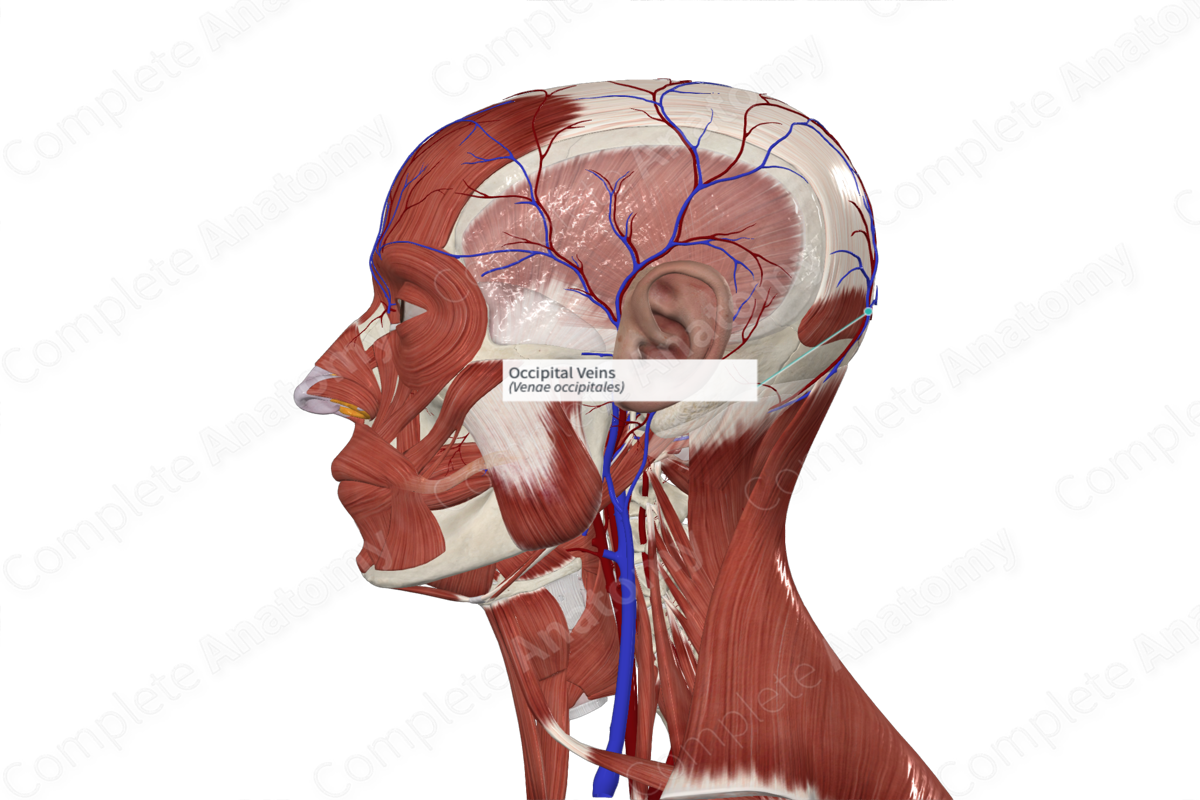
Quick Facts
Origin: From a venous plexus on the posterior scalp.
Course: Pierces the cranial attachment of trapezius and turns deep into the suboccipital triangle to drain into the internal jugular vein. It may also drain into the external jugular vein via the posterior auricular vein.
Tributaries:
Deep cervical and mastoid and occipital emissary veins.
Drainage: Posterior scalp.
Related parts of the anatomy
Origin
The occipital vein originates from a small network or plexus of veins on the posterior scalp in a region spanning from the superior nuchal line to the vertex of the skull.
Course
The occipital vein emerges as a single vessel from the plexus on the posterior scalp. It pierces the cranial attachment of trapezius muscle and turns deep. It follows the course of the occipital artery and ends by draining into the internal jugular vein. It may also drain into the external jugular vein indirectly via the posterior auricular vein.
Tributaries
The occipital vein receives the deep cervical vein. Additionally, emissary veins connect the occipital vein to the intracranial venous sinuses via the mastoid (with the transverse sinus) and occipital (with the confluence of sinuses) emissary veins.
Structures Drained
The occipital vein drains the muscles and skin of the occipital region.
Learn more about this topic from other Elsevier products




